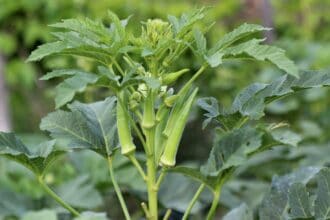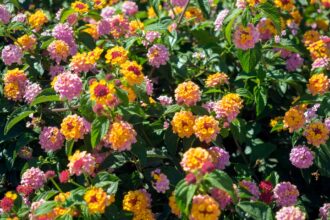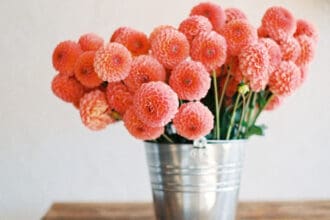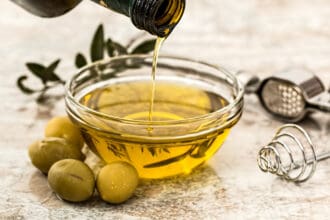
via: Pexels / Thought Catalog
In this article, these different types of yellow flowers will take center stage.
Women love crimson roses, hydrangeas are popular for their pastel colors, and Japan is well-known for its cherry blossoms.
In my years as a gardening expert, I've come across many yellow flowering plants. I can attest that sunflowers are just one of the many beautiful yellow flowers that exist.
Today, we're breaking down all the types of yellow flowers, how to care for them, and their different meanings.
Contents
What Do Yellow Flowers Represent?
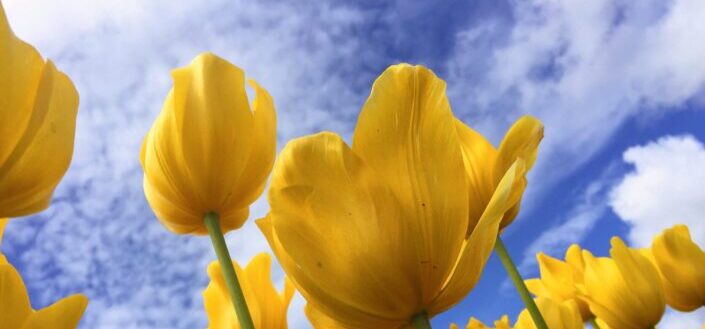
via: Unsplash / Melissa Askew
The color yellow primarily suggests warmth, positivity, happiness, pride, intelligence, and success. In the language of flowers, different yellow flowers bear different meanings. These meanings vary between cultures.
The Mayans, for example, associate yellow flowers with abundance because they resemble the color corn. They were also highly valued in ancient Greece and Egypt because of their likeness to the sun. In most contexts, Marigolds symbolize happiness. However, in Mexican culture, they represent grief or death and are often used as decorations on graves and during Dia de Los Muertos or the Day of the Dead.
In Victorian times, receiving a yellow tulip means that you have an exceptionally beautiful smile or that "there is sunshine in your smile."
Receiving a California poppy means that person has been dreaming of you. A bouquet of yellow roses could mean friendship, happiness, jealousy, or even the end of a relationship.
7 Best Types of Yellow Flowers For A More Beautiful and Brighter Garden
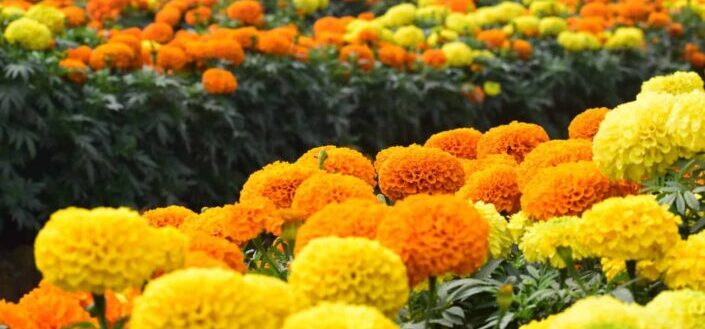
via: Pexels / GM Rajib
Yellow flowers add a gorgeous pop of color to any garden. From rare yellow roses to wild Black-eyed Susans, I've rounded up the best yellow blooms and how to care for them.
Type #1: Forsythia
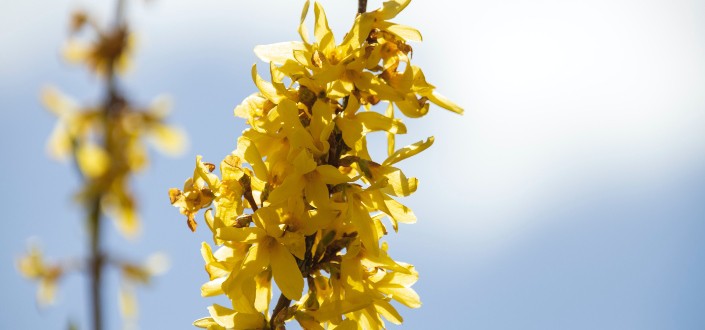
via: Unsplash / Maureen Astrid
Forsythias or golden bells are flowering shrubs that belong to the olive family. These long-lived, fast-growing shrubs can grow up to ten feet tall. They boast long, arching branches and bright yellow flowers that bloom very early in the spring.
Forsythia plants add a cheerful pop of color and flair to a home. They're a popular choice as centerpieces or backdrops for any yard. The flowers grow lavishly and before the leaves, so you can enjoy a full view of the blooms without the foliage.
Taking care of a forsythia plant is pretty low maintenance too. They love the sun so make sure to plant them in a spot with well-draining soil where they can soak up at least six hours of sunlight a day. Water them at least two inches a week for the best bright yellow hues.
Type #2: Lydian Broom
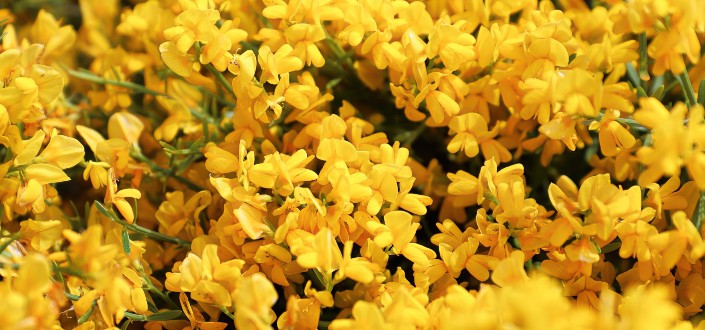
via: Depositphotos / Akchamczuk
Unlike Forsythia plants, Lydian brooms are mound-forming shrubs. They feature lax, trailing branches with small yellow flowers that bloom in the early summer or late spring.
These bushes grow thick, green foliage, spread one to two feet high and three to four feet wide, making them perfect ground covers for any garden.
Its ornate, pea-like yellow flowers and blue-green leaves have gained the Royal Horticultural Society's Award of Garden Merit. But even with its lush status, it doesn't take a lot to grow and care for Lydian brooms.
Lydian brooms thrive on neglect and easily grow in poor, infertile but well-drained soil. Water them one inch a week and ensure they get continuous, direct sun per day.
Type #3: Japanese Rose
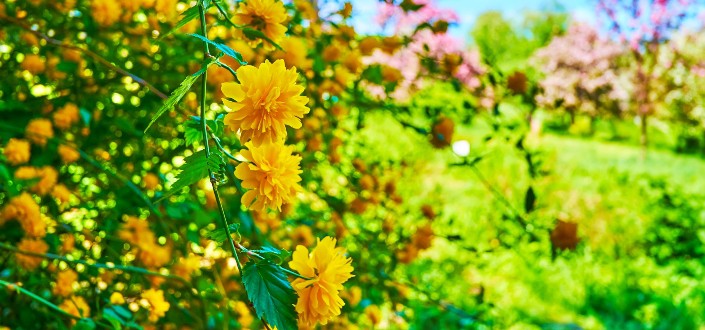
via: Depositphotos / efesenko
A Japanese rose, or Japanese Kerria, is a rare flowering shrub native in Asia. It's well known for its five-petaled, sometimes spherical yellow flowers that bloom in spring and again in late summer. Japanese roses have petals that grow about 3.5 cm cross and may also come in shades of red, pink, orange, and white.
Its graceful yet elusive flowers only bloom in bright sunlight and do not open under overcast skies or at night. They also only last for three days but are quickly succeeded by new blooms.
Japanese roses thrive in full or partial shade despite their delicate appearance. They grow best in loamy, well-drained soil of medium fertilization. Just make sure to water them regularly.
Type #4: Chrysanthemum
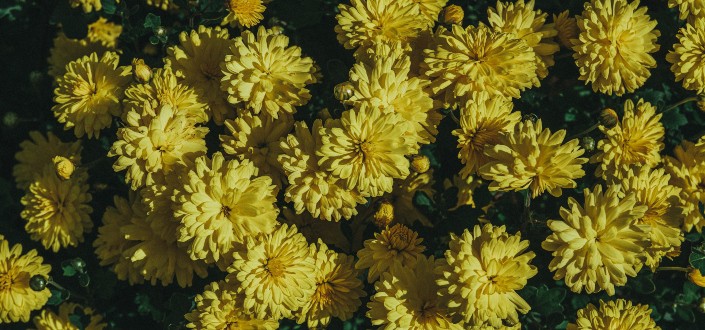
via: Unsplash / Ivan Lopatin
Chrysanthemums, or mums as we casually call them, are a staple in fall gardens and a favorite among florists. They symbolize abundance, happiness, longevity, and sometimes even death.
A Chrysanthemum bloom is made of hundreds of tiny florets, which showcases brilliant jewel colors of red, lavender, pink, red, bronze, orange, white, yellow, and purple flowers. But these perennial flowers aren't just pretty. They have healing properties too.
In traditional Chinese medicine, Chrysanthemums can treat common colds, headaches, dizziness, and high cholesterol.
If you're planning on growing mums, it's best to plant them in the early spring to give them time to adopt in your garden home. Planting them in the spring also produces bigger blooms in the following season.
Chrysanthemums grow best in well-draining soil with ample moisture. They also love the sun and need at least six hours of sunlight each day. If you're planting in warmer garden zones, a partial shade is appropriate during hot summer afternoons to prevent scorching.
Type #5: Black-eyed Susan
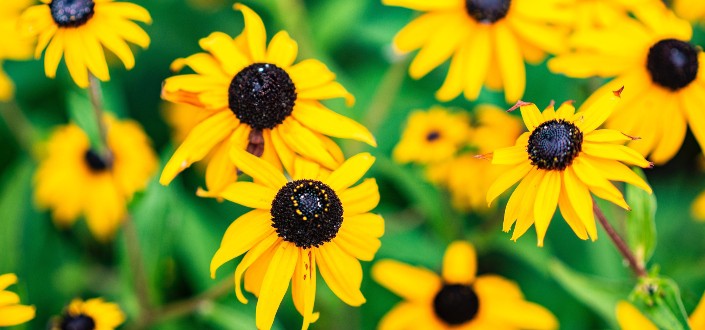
via: Unsplash / Mark Teachey
Rudbeckia hirta, or the Black-eyed Susan, is a wildflower native in North America. Black-eyed Susans are like daintier versions of sunflowers. They're famous for their dark brown-purple center and petals that resemble daisies. This golden-yellow flower grows in clusters and blooms throughout the summer.
Black-eyed Susans are territorial plants and can spread aggressively. If you're planning to grow them in your garden, make sure to plant them further from your other plants to avoid overcrowding and allow space for new blooms.
They love the sun, and although they're drought-tolerant, frequent watering will keep them from looking dry. It's also important to deadhead faded or dead flowers to encourage new blooms.
Type #6: Marigold
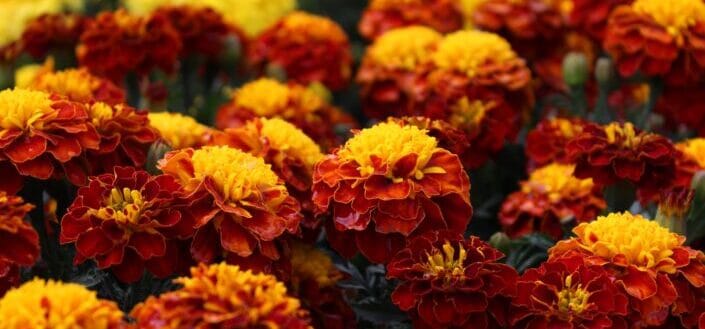
via: Unsplash / Rebecca Niver
Marigolds are easy to grow, inexpensive, bloom all summer, and are outright eye candies. This is why many people love them.
This annual flower brings bright gold, copper, or brass hues to home gardens. It attracts beneficial insects and pollinators such as butterflies, bees, and ladybugs.
Marigolds are best planted during the spring and grow best in warm weather. They sprout within a week and produce blooms in about eight weeks. For the prettiest flowers, plant your marigolds in full sun, fertile soil, and make sure they have an ample supply of water every day.
Type #7: Carnation
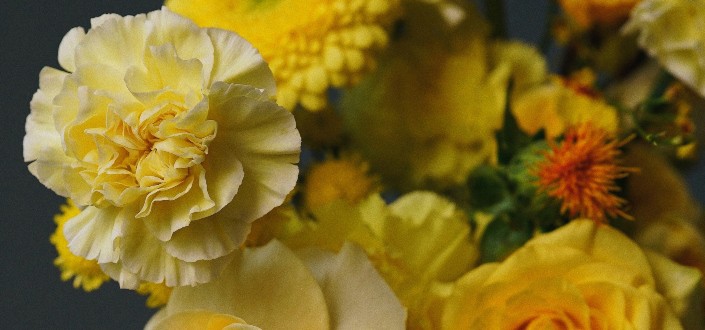
via: Pexels / Алекке Блажин
Carnations or Dianthus got its name from the Greek words "Dios," which means god, and "Anthos,'' which means flower.
True to its title as the flower of the gods, this perennial flower is one of the hardier ornamental plants that need little care. Aside from its visual appeal, its distinct clove-like, spicy floral scent is also one of the admirable qualities of a carnation flower.
Carnations prefer full sun and well-draining, fertile soil. Make sure to plant them where they can get six hours of sunlight per day and in soil with a pH level of around 6.7.
Water your freshly planted Carnation plant generously once a week and avoid overwatering established ones to keep its leaf from turning yellow.
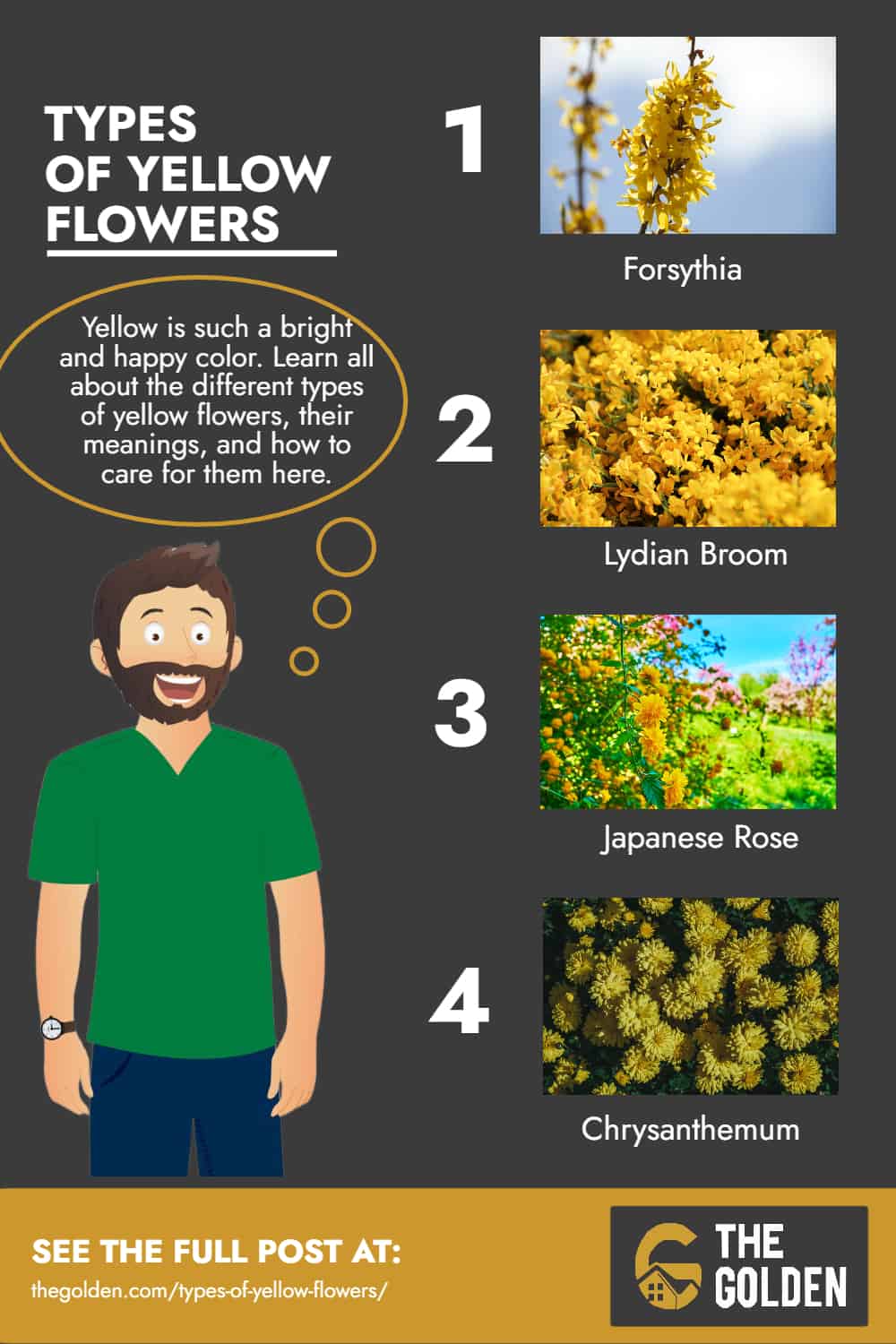
via: The Golden
Share This Image On Your Site
How to Care for Yellow Flowering Bushes
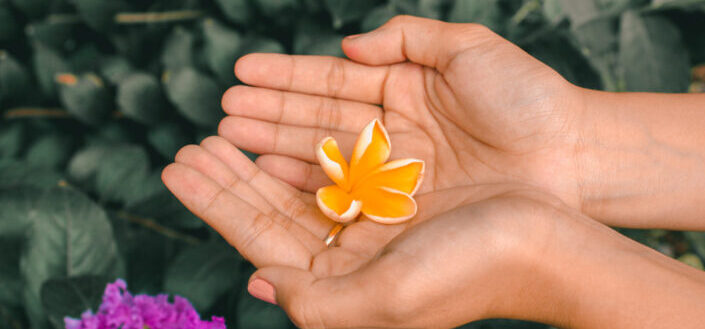
via: Pexels / Jem Sanchez
Other yellow flowers can instantly brighten up our home. You also have the Graham Thomas rose, Julia Child rose, a yellow lily, a greater Celandine, a California poppy, and an evening primrose. And to get the most out of these yellow beauties, proper care and maintenance are a must.
1. Give Them Loads of Sun

via: Pexels / Darcy Lawrey
Yellow flowering plants love the outdoors and must have gotten their warm hues from the sun. If you're planning to grow these bright yellow flowers in your home, make sure to place them under an open sky where they can be exposed to a lot of sunlight.
2. Consider Its Living Condition

via: Unsplash / Allyson Beaucourt
If you're planning to grow a yellow flowering plant, it's also important to consider the environment you're in. Not all yellow flowers grow under the same conditions.
Some may thrive in poor soil, while others grow best in nutrient-rich grounds. For example, Marigolds are best planted in warm weather areas, while daffodils are meant to last the winter frost. Chrysanthemums are best planted in the spring, while autumn is the best time to plant evening primrose.
3. Trim for a "bushier" look.

via: Pexels / cottonbro
Trimming your plants encourages more growth and keeps them lusher, so make sure to cut off any dead branches or pluck out any dead leaves in your plants.
4. Water regularly.
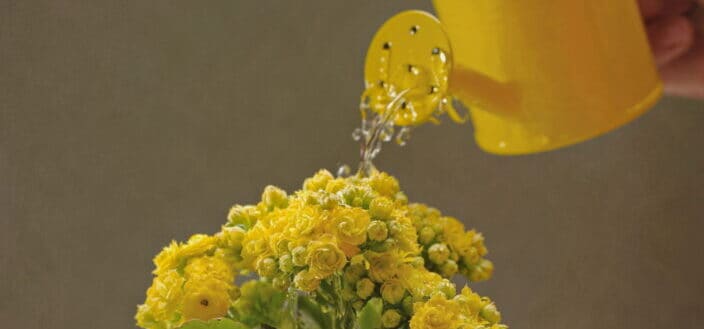
via: Pexels / Damir Mijailovic
Flowering shrubs do best in well-draining soil. This means that you should water the plants at least twice a week, during the morning or late in the afternoon.
Frequently Asked Questions
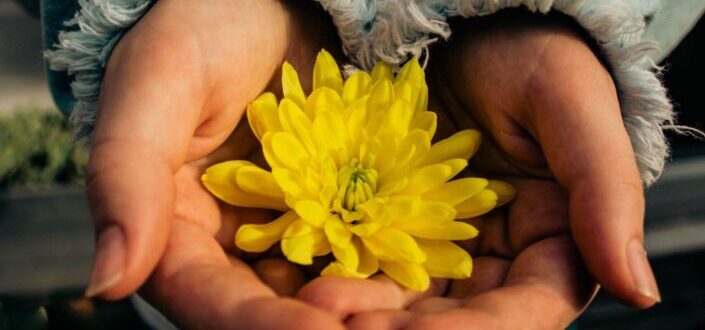
via: Unsplash / Sam Field
In case you need more reasons to include yellow flowers in your home gardens, here are more fun facts about these grails of sunshine:
Why do yellow flowers bloom first?
The reason yellow flowers are one of the first to bloom all comes down to their inherent properties and who pollinates them. Flies are often the first pollinators during the onset of spring. Since they have a unique visual spectrum different from ours, white and yellow flowers stand out more against the sea of green leaves.
What does it mean when someone gives me yellow flowers?
Depending on the context or custom, receiving yellow flowers can mean differently. A Gerbera daisy, for example, is given during times of celebration. But, receiving a yellow carnation flower means rejection or that you've disappointed the person.
Unlike Marigolds that symbolize death, a yellow butterfly bush represents rebirth and a new beginning.
An evening primrose represents young love and feelings of attachment, while a yellow iris symbolizes passion.
If a friend or a loved one is expecting good news, sending a Greater Celandine or a bunch of them is a good idea. If someone you know is recovering from a sickness, wish them good health and strength with a yellow coneflower.
What does a yellow chrysanthemum mean?
There are about 40 or so species of Chrysanthemum, and it comes as no surprise that they have a variety of meanings across different cultures.
During the Victorian era, yellow Chrysanthemums represented sorrow, unrequited and neglected love.
Meanwhile, in modern America and most western cultures, yellow mums symbolize happiness, joy, celebration, and high spirits.
In Japan, it symbolizes immortality and is an emblem for the emperor and the Imperial House.
Are yellow flowering plants great additions to your houseplants?
I mean, why not? We give out flowers or decorate our gardens with flowers to make someone's day brighter and our homes happier. And what better color to represent these than the color yellow.
Remember that different flowers require different care and living conditions to thrive.
More Awesome Types of Plants
Whether you're a seasoned green thumb or just getting started with gardening, here are more plants that are easy to grow and require little care.
- If you can't be bothered with frequent watering and soil maintenance, these types of succulents are as low maintenance as they can get.
- Did you know that just two hours a week in nature can have a positive effect on your mental health and wellbeing? Keep your home evergreen with these types of ferns.
- The versatile Aloe Vera plant is a must-have in any home. I bet you didn't know there's a lot of them. Check out these types of aloe and their many benefits.
- Growing orchids can seem intimidating, but they are actually pretty easy to grow. These types of orchids make perfect ornamental plants or centerpieces.
In Conclusion
Yellow has always been a happy color.
If you're looking to cheer up your space, brighten up someone's day, or celebrate a joyful occasion, all you have to do now is pick between these different types of yellow flowers.
We hope you found this article about the types of yellow flowers insightful.
Double the happiness by sharing this article with your friends and family!








